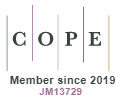Regenerating Historic Urban Areas Through Sustainable Livelihoods - Problematizing Economy Within Historic Urban Areas
DOI:
https://doi.org/10.15415/cs.2016.41003Keywords:
Sustainability, Urban conservation, Cultural capital, Traditional craftsAbstract
In the historic core of Ahmedabad, the Archaeological Survey of India (ASI) reported major encroachments, leading to destruction of the tomb of Darya Khan [5]. The encroachments were undertaken by the local community for residential purposes and by the informal sector for commercial purpose, for which the local administration as well as the community were blamed. Urban conservation, as the example indicates, is not limited to the preservation of buildings. It considers architecture of the built heritage as one of the elements of the overall urban setting that includes living expressions such as oral traditions, performing arts, social practices, rituals, festivals, and traditional skills implicitly embedded in the community. Heritage is, thus not only a legacy to be preserved for future generations, but also something for and abou,t the existing communities. This paper is based on the premise that today, the sustainability of historic areas rests on due
consideration being given to the role of the communities and improvement of their quality of life through economic augmentation. There is a major shift in focus on the economic value of cultural heritage. But, merely considering the economic value of a historic site and its revenue options will not lead to a comprehensive solution for urban conservation. The aim of this paper is to understand the signiicance of traditional economy in historic urban areas, the current processes of transformation in this sector, and also its potential contribution for managing urban heritage and aiming towards larger goal of sustainability.
Downloads
References
[2] BANDARIN, F. and OERS, R. (eds.) (2015). Reconnecting the City: The Historic Urban Landscape Approach and the Future of Urban Heritage. West Sussex: Wiley
[3] HOSAGRAHAR, J. (2013) Background Note to Session on Culture’s Contribution to Achieving Sustainable Cities. In: Proceedings of the International Congress on Culture: Key to Sustainable Development, Hangzhou, 15–17 May 2013. Paris: UNESCO.
[4] INDIAN NATIONAL TRUST FOR ART AND CULTURAL HERITAGE (2015) Urban Heritage in Indian Cities: Compendium of Good Practices. New Delhi: National Institute of Urban Affairs.
[5] INTERNATIONAL COUNCIL ON MONUMENTS AND SITES (1987) Charter for the Conservation of Historic Towns and Urban Areas (Washington Charter 1987). Available from https://www.icomos.org/charters/towns_e.pdf [Accessed: 27 February 2016]
[6] MAHURKAR, U. (2013) Monumental neglect, Thwarting efforts to preserve history, residents misuse medieval structures. India Today 26th June. Available from http://indiatoday.intoday.in/story/thwarting-efforts-to-preserve-historyahmedabad-residents-misuse-medieval-structures/1/306074.html [Accessed: 30 May 2016]
[7] MOON, B.K. (2013) Secretary-General’s remarks at General Assembly thematic debate on Culture and Sustainable Development. [Online] UN. Available from https://www.un.org/sg/en/content/sg/statement/2013-06-12/secretary-generalsremarks-general-assembly-thematic-debate-culture [Accessed: 27 May 2016]
[8] O’BRIEN, J. (2012) Livable Historic City Cores and Enabling Environment: A Successful Recipe to Attract Investment to Cities. In: LICCIARDI, G. andAMIRTAHMASEBI, R. (eds.) The Economics of Uniqueness: Investing in Historic Cores and Cultural Heritage Assets for Sustainable Development, 1st ed. Washington DC: World Bank,pp. 1–14.
[9] PIPLANI, N. (2012) Challenges and Potentials for World Heritage Involving Communities Case Study: Taj Mahal, India. In: Proceedings of the International Conference on Involving Communities in World Heritage Conservation – Concepts and Actions in Asia,Buyeo, 10–12 September 2012. Paris: UNESCO, pp. 99–109.
[10] SANTAGATA, W. (2004) Cultural Districts and Economic Development. EBLA Working Papers, 01/2004, Torino: University of Turin
[11] TAYLOR, K. (2013) Cultural Mapping: Intangible Values and Engaging with Communities with Some Reference to Asia, The Historic Environment, 4 (1), pp. 50–61
[12] THROSBY, D. (2010) The Economics of Cultural Policy. New York: Cambridge University Press
[13] UNESCO INSTITUTE FOR STATISTICS (2009) The 2009 UNESCO Framework for Cultural Statistics. Montreal: UIS.
[14] UN-HABITAT (2015) Habitat III Issue Papers – 4: Urban Culture and Heritage. Available from http://www.unesco.org/ileadmin/MULTIMEDIA/HQ/CLT/pdf/ISSUE-Paper-En.pdf [Accessed: 17 January 2016]
[15] UNITED NATIONS EDUCATIONAL, SCIENTIFIC AND CULTURAL ORGANIZATION (2008) Historic Districts for All: A Social and Human Approach for Sustainable Revitalization. UNESCO Working Document, 09/2008, Paris: UNESCO
[16] UNITED NATIONS EDUCATIONAL, SCIENTIFIC AND CULTURAL ORGANIZATION and UNITED NATIONS DEVELOPMENT PROGRAMME (2013) Creative Economy Report 2013 Special Edition: Widening Local Development Pathways. New York: UNDP
[17] YANG, M. (2015) Culture in Moving the MDGs to the Post-2015 Development Agenda: Some Relections on the Role of Living Heritage for Sustainable Development. In: ALBERT, M. (ed.) Perceptions of Sustainability in Heritage Studies – Volume 4 of Heritage Studies. 1st ed. Berlin:Walter De Gruyter, pp. 21–34.
Downloads
Published
Issue
Section
License
Articles in the Journal of Creative Space (Creat. Sp.) by Chitkara University Publications are Open Access articles that are published with licensed under a Creative Commons Attribution- CC-BY 4.0 International License. Based on a work at https://cs.chitkara.edu.in. This license permits one to use, remix, tweak and reproduction in any medium, even commercially provided one give credit for the original creation.
View Legal Code of the above-mentioned license, https://creativecommons.org/licenses/by/4.0/legalcode
View Licence Deed here https://creativecommons.org/licenses/by/4.0/
 |
Journal of Creative Space by Chitkara University Publications is licensed under a Creative Commons Attribution 4.0 International License. Based on a work at https://cs.chitkara.edu.in/ |







